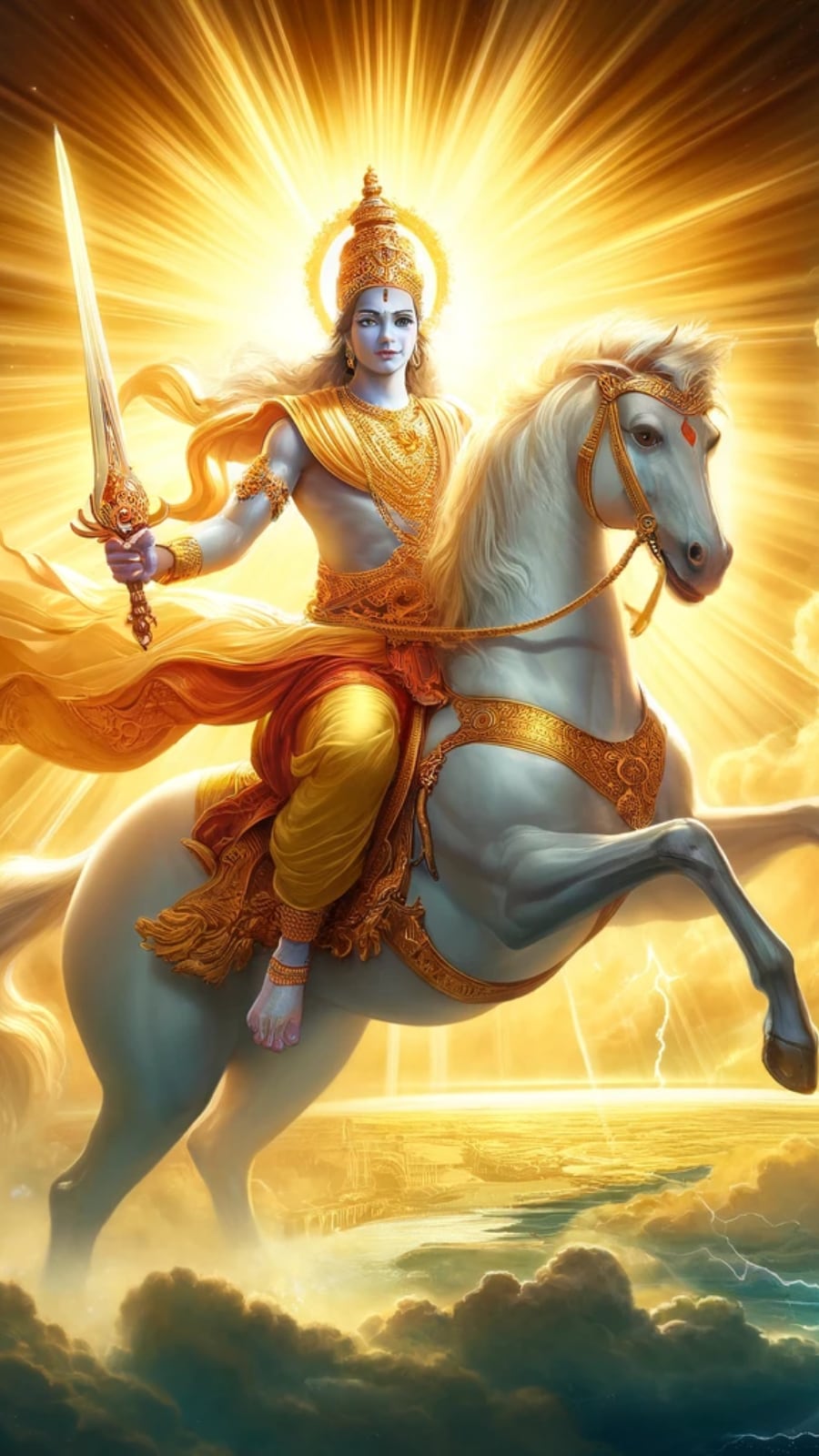Hinduism's primary character, Lord Krishna, is adored as a representation of divine playfulness, love, and knowledge. Krishna was nurtured in Gokul after being born in Mathura, and his life is replete with profound lessons and remarkable occurrences.
He delivered the Bhagavad Gita during the Mahabharata, which had a profound effect on philosophy and spirituality. This article explores the early life of Krishna, his contributions to philosophy, and his role in the Dashavatara, or the 10 incarnations.
Lord Krishna
- Birth and Early Life: Krishna was born in a prison cell, son of Devaki and Vasudeva in Mathura, destined to defeat his ruthless uncle, King Kansa. Nanda and Yashoda raised him in Gokul, where he depicted divine qualities from a young age.
- Role in Mahabharata: Krishna serves as the chauffeur and guide for Arjuna during the Kurukshetra War. His teachings in the Bhagavad Gita address fundamental questions about duty, righteousness, and the nature of reality.
- Philosophical Contributions: Krishna advocates a path of devotion (bhakti) and selfless action (karma yoga) in the Bhagavad Gita, emphasizing the value of carrying out one's task without attachment to the outcomes.
- Cultural Significance: In celebration of his birth, Krishna is honoured on holidays such as Janmashtami. He is portrayed in a variety of ways, frequently with a group of followers and a flute in hand.
- Legacy: One of the most venerated deities in Hinduism, Krishna's life and teachings have influenced many scriptures, artistic creations, and devotional rituals.
Krishna, the primary figure in the Dashavatara, is a representation of love, wisdom, and divine playfulness. It also shows the different ways in which Vishnu incarnates to restore balance and righteousness. Because of his significant influence on Hindu philosophy and culture, he is revered as a god in many different religions.
10 Avatars of Vishnu
The 10 avatars of Vishnu, referred to as the Dashavatara, are the divine incarnations that Vishnu has taken on to preserve dharma (justice) whenever it is in danger and to restore cosmic order. Every avatar embodies a distinct purpose and narrative that reflects various facets of Vishnu's position as the universe's preserver. The ten avatars are as follows:
-
Matsya (The Fish)
Vishnu takes the form of a fish to save humanity from a catastrophic flood, guiding the sage Manu to build a boat to preserve life.
![]()
Source: Wikipedia
2. Kurma (The Tortoise)
In this form, Vishnu supports Mount Mandara during the churning of the ocean, helping the gods and demons obtain the Amrita (nectar of immortality).
![]()
Source: Facebook
3. Varaha (The Boar)
Vishnu appears as a boar to rescue the Earth (Bhudevi) from the demon Hiranyaksha, who had submerged her in the cosmic ocean.
![]()
Source: Wikipedia
4. Narasimha (The Man-Lion)
This avatar is a fierce half-man, half-lion form taken by Vishnu to defeat the demon king Hiranyakashipu, who was granted a boon making him nearly invincible.
![]()
Source: Hoovu Fresh
5. Vamana (The Dwarf)
Vishnu incarnates as a dwarf Brahmin who asks the demon king Bali for three paces of land, then expands to cover the universe in three steps, demonstrating humility and devotion.
![]()
Source: ABP News
6. Parashurama (The Warrior-Sage)
A warrior-sage who wields an axe, Parashurama is born to eliminate evil and restore righteousness on Earth.
![]()
Source: Hoovu Fresh
7. Rama (The Prince)
The hero of the epic Ramayana, Rama's mission is to rescue his wife Sita from the demon king Ravana, embodying the ideals of duty and virtue.
Source: Quora
8. Krishna (The Playful God)
Known for his teachings and divine fun, Krishna is an important character in the Mahabharata who teaches wisdom in the Bhagavad Gita.

Source: The Indian Mythology
9. Gautama Buddha (The Enlightened One)
While there is disagreement among Buddhists, some traditions regard Buddha as a manifestation of Vishnu, promoting compassion and the road to enlightenment.
Source: Quora
10. Kalki (The Future Warrior)
Kalki is an avatar who is supposed to ride a white horse and wield a sword to vanquish evil and bring righteousness back after the current period (Kali Yuga).

Source: MoneyControl
These avatars illustrate Vishnu's commitment to preserving order and righteousness throughout the ages, each representing a distinct aspect of his divine mission.
There is no comparison to Krishna's impact on Hindu philosophy and culture. In the Bhagavad Gita, Krishna promotes a life of purity, selflessness, and devotion through his teachings. Krishna, one of Vishnu's incarnations, is highly esteemed in many religions because he represents the divine purpose of upholding cosmic order.
Krishna is one of the characters in the Dashavatara that demonstrates the enduring importance of divine intervention in preserving the universe's equilibrium. Millions of people are still inspired by Krishna's legacy, which embodies the eternal force of his teachings, divine playfulness, and life.
Comments
All Comments (0)
Join the conversation